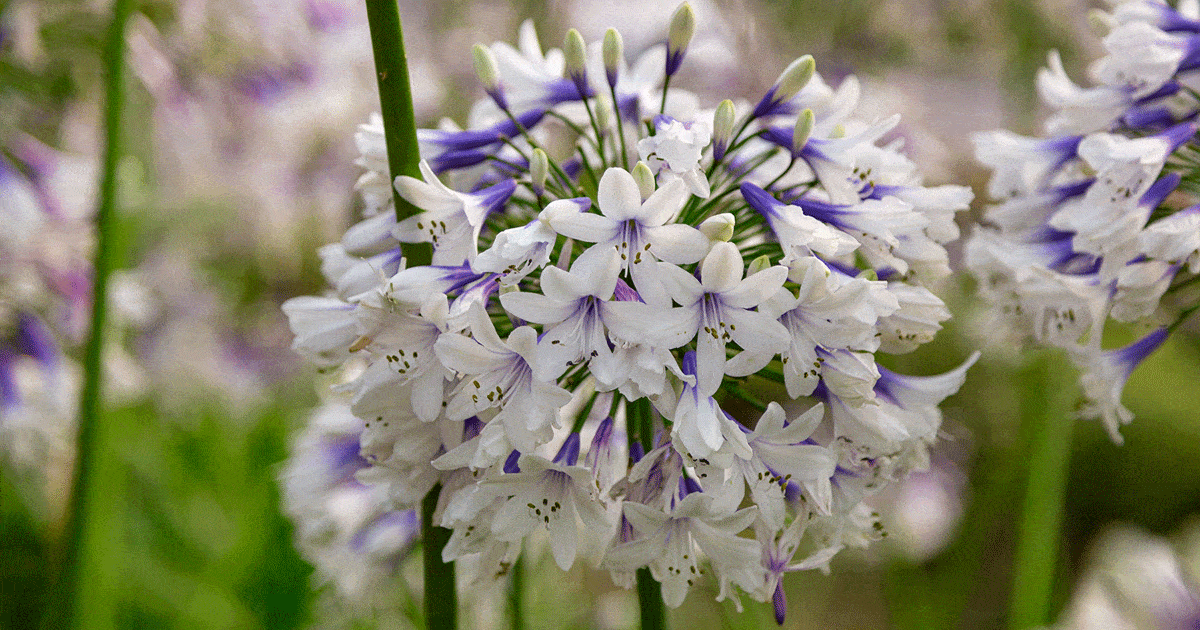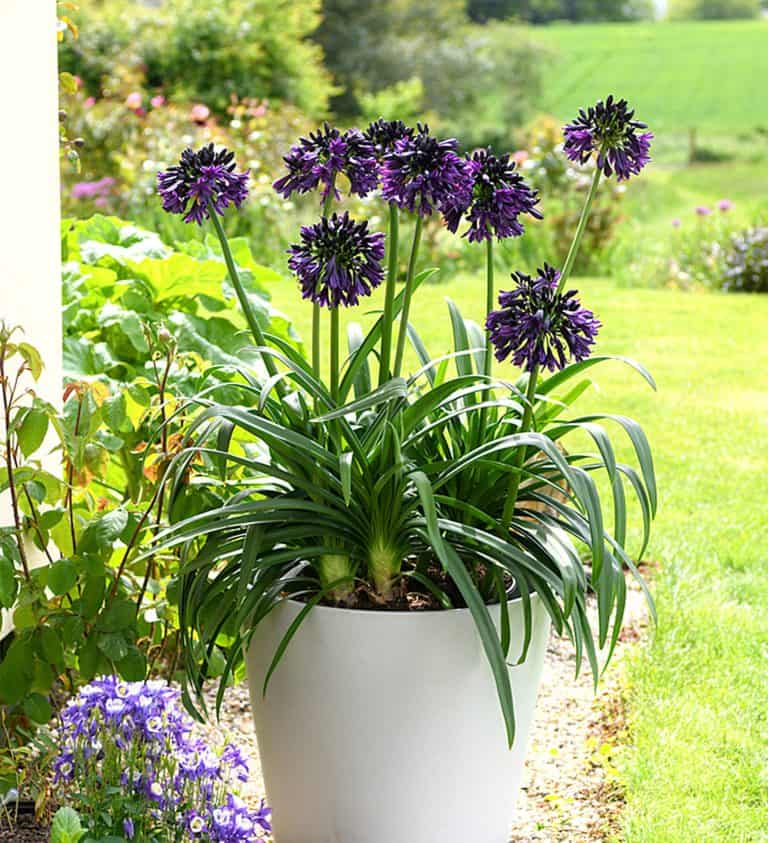Agapanthus Varieties: Picking the very best for Your Landscape
Wiki Article
Releasing the Secret to Effective Agapanthus Farming: Tips and Techniques for a Flourishing Garden
In the realm of horticulture, cultivating agapanthus successfully requires a calculated strategy that includes numerous aspects of plant treatment. By understanding the subtleties of agapanthus cultivation, one can create an atmosphere where these plants prosper and grow abundantly.Planting Agapanthus: Finest Practices
When planting Agapanthus, appropriate soil prep work is necessary for guaranteeing effective development and development of these attractive blossoms. Agapanthus, frequently recognized as Lily of the Nile or African lily, grows in well-draining soil with a somewhat acidic to neutral pH degree - Agapanthus. Before planting, it is important to amend hefty clay dirts with natural issue such as garden compost or peat moss to boost water drainage and give important nutrients for the plantsTo plant Agapanthus, select a place that receives full sunlight to partial color, as this will promote healthy growth and abundant flowering. Dig a hole two times the size of the plant's origin sphere and put the Agapanthus at the exact same depth it was previously growing. Gently backfill the hole with dirt, pushing down strongly to remove any kind of air pockets around the roots.
Water the freshly grown Agapanthus thoroughly and proceed to maintain the soil evenly damp, especially throughout the plant's active expanding period. Agapanthus. Applying a well balanced plant food once a month can better sustain the plant's development and blooming. By complying with these finest practices for planting Agapanthus, you can create a spectacular screen of these captivating flowers in your yard
Perfect Soil Conditions for Agapanthus
For ideal development and flowering success of Agapanthus plants, ensuring the dirt conditions are ideal is critical. Agapanthus chooses dirt that is rich in nutrients, so integrating a well balanced fertilizer throughout the growing period can promote healthy and balanced development and dynamic blossoms.
Watering and Feeding Tips
To ensure healthy and balanced development and vibrant blooms, proper watering and fertilizing techniques are crucial for effective Agapanthus farming. Agapanthus plants take advantage of routine watering, specifically throughout the expanding period. It is suggested to water deeply as soon as a week, ensuring the dirt is damp however not soaked. Throughout warm weather condition or in pots, even more constant watering may be required to avoid the soil from drying totally.When it pertains to feeding Agapanthus, a balanced plant food with equal parts nitrogen, phosphorus, and potassium can be used in the spring to advertise healthy and balanced development and flowering. Slow-release fertilizers are perfect for offering nutrients gradually over an extended duration. Prevent over-fertilizing, as this can cause excessive foliage growth at the expenditure of blossoms.
In addition, integrating natural issue like garden compost right into the soil can boost nutrient levels and enhance dirt framework, assisting in the total wellness of the Agapanthus plants. By complying with these watering and fertilizing pointers, gardeners can guarantee their Agapanthus plants prosper and create magnificent screens of blossoms.
Pruning and Deadheading Methods
Correct pruning and deadheading strategies play a vital duty in preserving the health and aesthetic appeals of Agapanthus plants, enhancing the crucial practices of watering and feeding for successful cultivation. Trimming Agapanthus includes eliminating invested blossom heads, yellowing or dead fallen leaves, and overall shaping of the plant to advertise better growth. Deadheading, the procedure of eliminating discolored flowers, not just enhances the plant's look but likewise urges further blooming.When deadheading Agapanthus, it is a good idea to clip off the flower stem at the base using sharp, clean shears. This procedure reroutes the plant's energy from seed manufacturing back right into origin and foliage growth, advertising a much healthier and more robust plant. Regular deadheading can prolong the flowering period of Agapanthus and prevent self-seeding, which can lead to overcrowding.
In regards to pruning, Agapanthus usually benefits from a light trim after blooming to tidy up the plant and encourage fresh growth. Reducing the invested blossom stems and eliminating any broken or dead vegetation helps maintain advice the plant's vigor and general appearance. Nonetheless, it is necessary to prevent cutting into the crown of the plant, as this can compromise its health.

Protecting Agapanthus From Pests and Diseases
Applying reliable bug and illness monitoring methods is essential to safeguarding the health and vigor of Agapanthus plants in farming. Agapanthus are usually sturdy plants, yet they can still fall target to various pests and diseases if not correctly looked after. One typical pest that influences Agapanthus is the Agapanthus borer, a caterpillar that passages right into the plant, triggering damage to the blossoms and leaves. To avoid invasions, normal assessment of the plants is vital. If borers are discovered, they can be manually removed, or insecticidal soap can be utilized as a control measure.In addition to pests, Agapanthus are prone to conditions such as root rot and fungal leaf areas. By staying alert and addressing pest and disease issues immediately, garden enthusiasts can help their Agapanthus Check Out Your URL flourish and thrive.

Final Thought
Finally, effective growing of agapanthus calls for proper planting strategies, optimal soil problems, appropriate watering and feeding, regular pruning and deadheading, and defense from bugs and illness. By adhering to these techniques index and tips, gardeners can make sure a prospering garden loaded with attractive agapanthus blossoms. Agapanthus. Remember to maintain regular treatment and focus to information to advertise the wellness and durability of these magnificent plantsWhen growing Agapanthus, correct dirt preparation is essential for making sure effective development and development of these beautiful flowers.Water the newly grown Agapanthus completely and continue to maintain the soil evenly damp, particularly during the plant's energetic growing period.For ideal growth and growing success of Agapanthus plants, making sure the soil problems are suitable is critical. When transplanting or planting Agapanthus, make certain the soil is well-prepared to provide the needed structure for the plants to establish themselves efficiently. One common parasite that impacts Agapanthus is the Agapanthus borer, a caterpillar that tunnels into the plant, triggering damages to the fallen leaves and flowers.
Report this wiki page